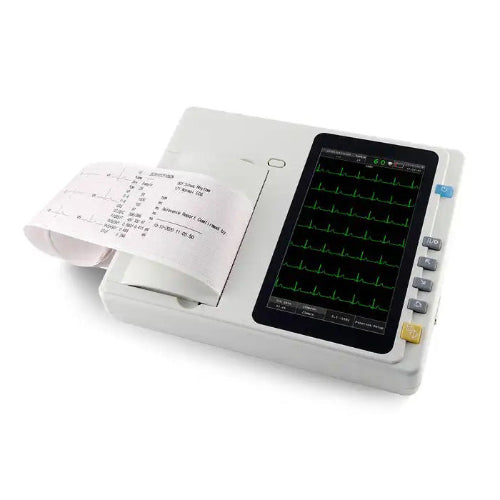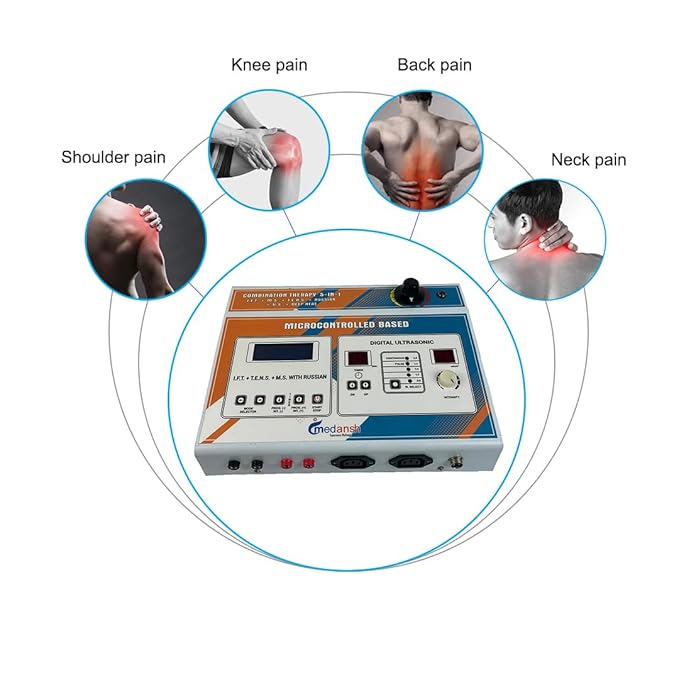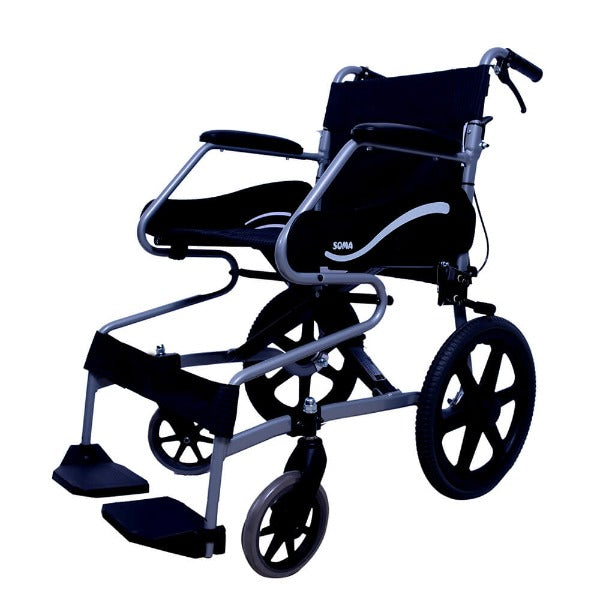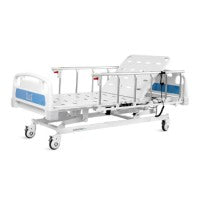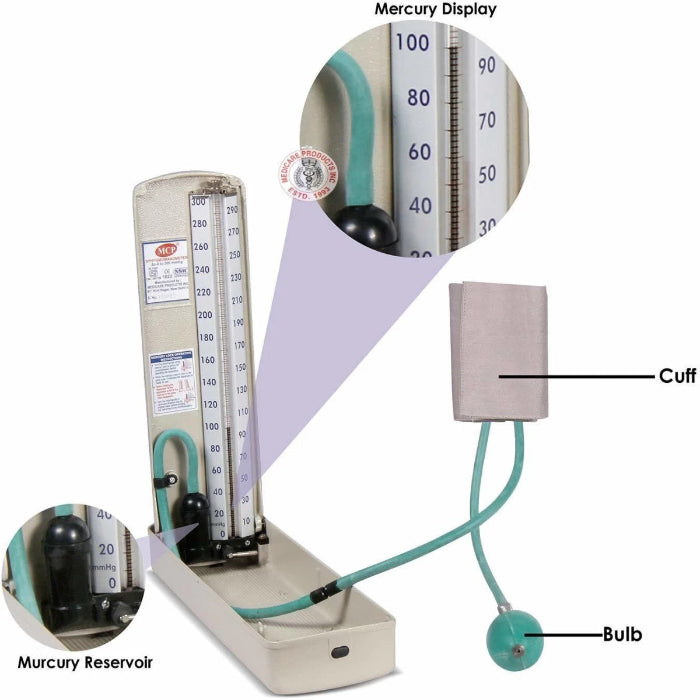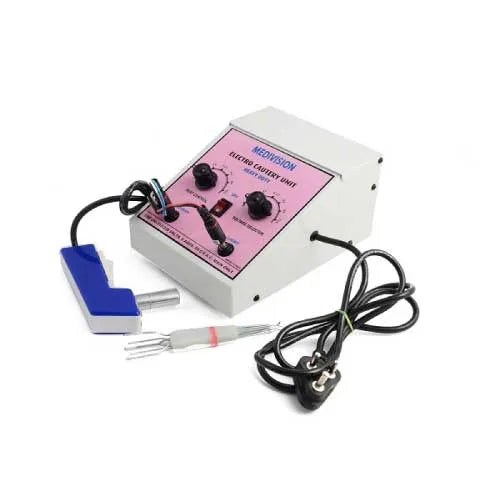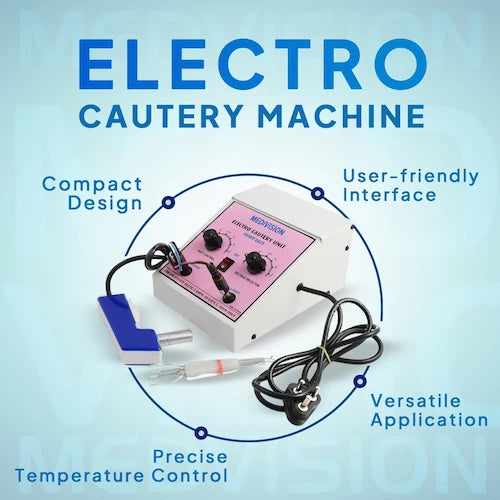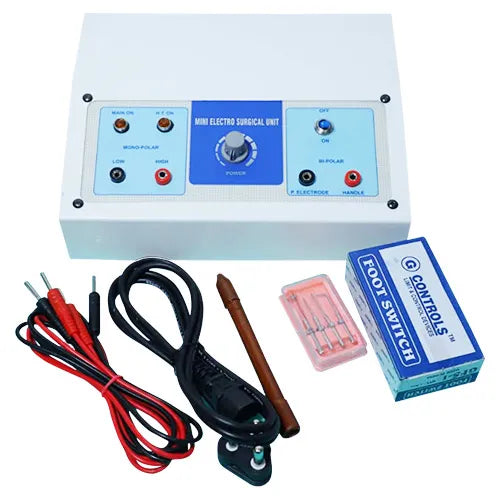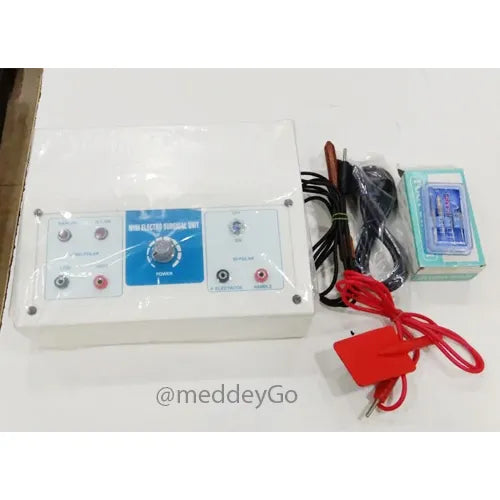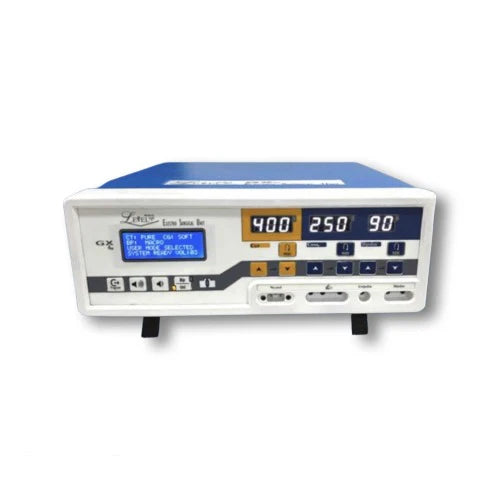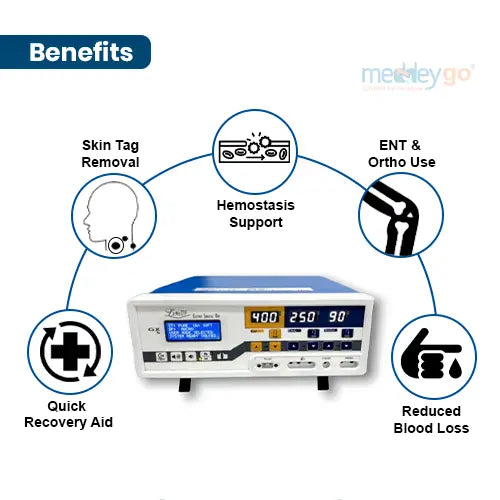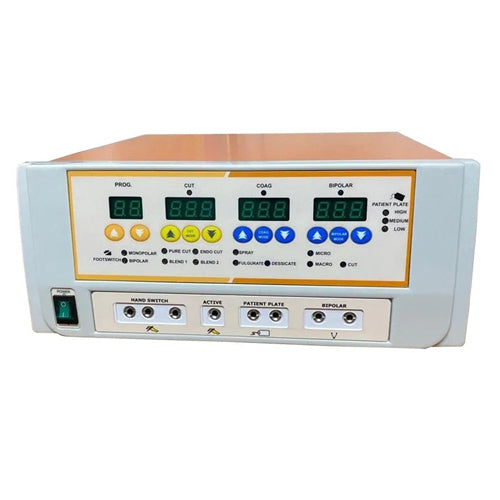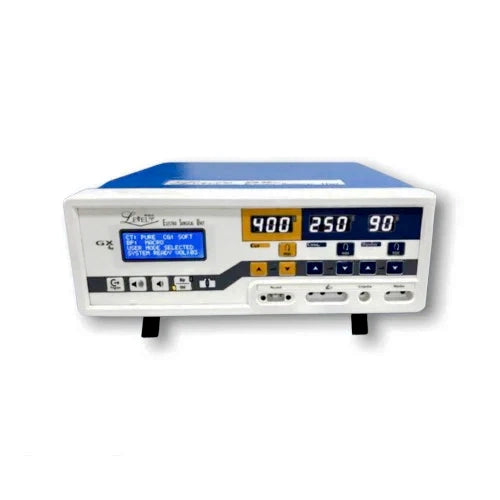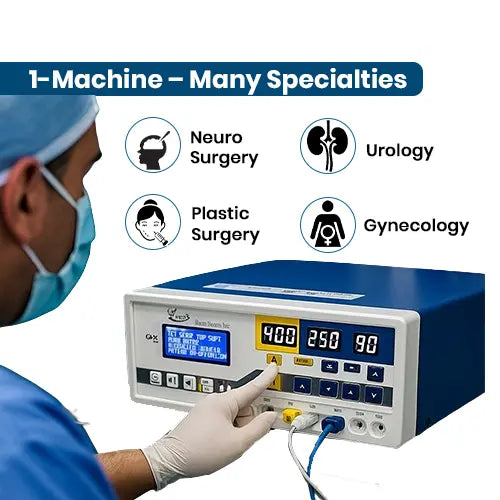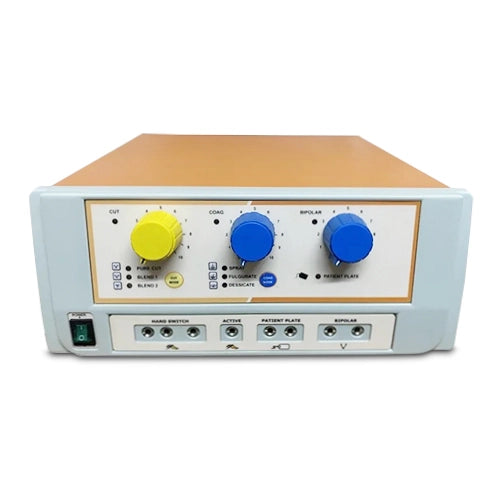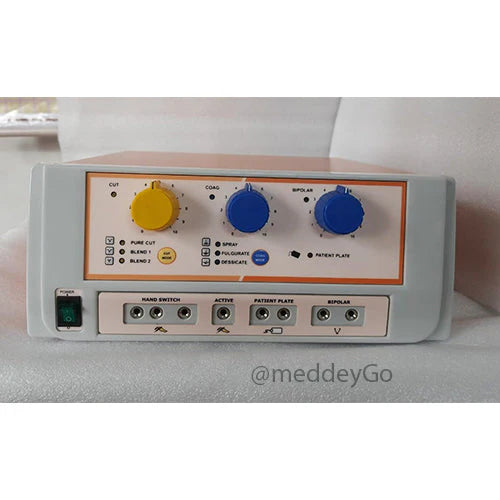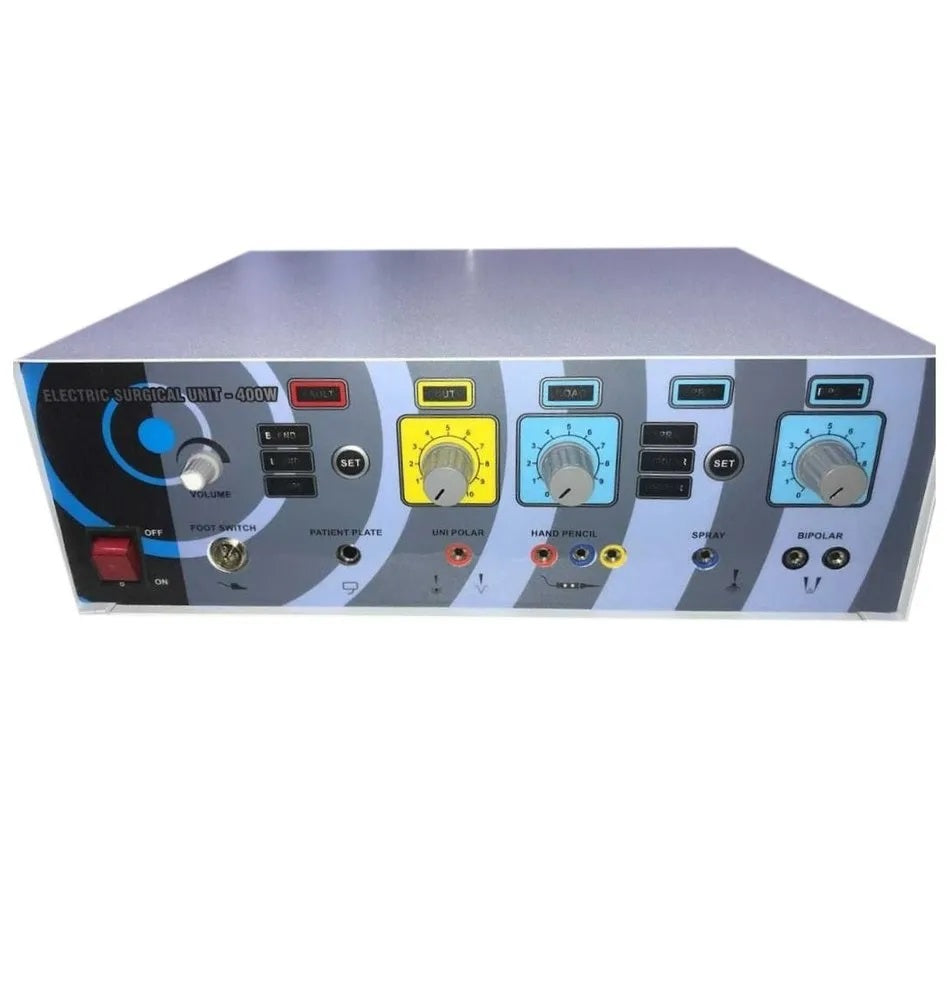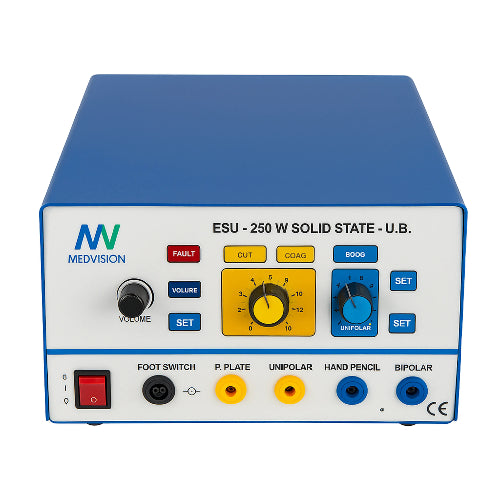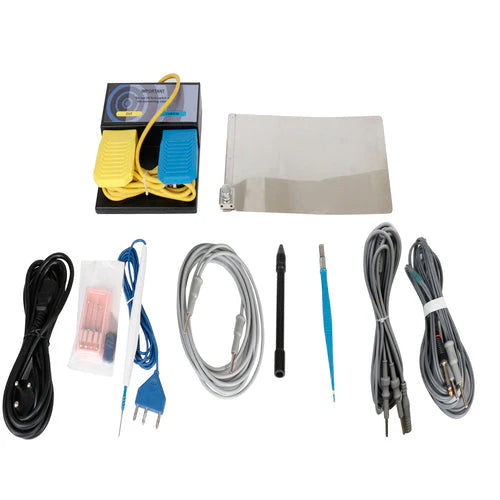Filter
8 products
Type: Surgical
Electro Surgical Cautery Machine with 1 Year Warranty
Type: Surgical
Mini Cautery Electro Surgical Monopolar Bi-Polar Unit
Type: Surgical
Digital Cautery Machine 400W
Type: Cautery Machines
Digital Cautery Machine BIOHEARTZ 400W, 480 KHz
Type: Surgical
Digital Cautery Machine 300W
Type: Surgical
Analog Cautery Machine 400w
Type: Surgical
Analog Cautery Machine 400 Watt
Type: Surgical
Analog Cautery Machine 250W
Collection:
Cautery Machine
A modern Cautery Machine is now standard in almost every operating room and minor OT in India. It uses high-frequency current instead of manual cautery, so it helps surgeons cut tissue, seal vessels, and control bleeding more safely and efficiently. On MeddeyGo, this category brings together practical electrocautery machine systems and flexible electrosurgical unit options. These models support both cautery monopolar and focused dual-electrode modes. Therefore, you can check power ratings, typical cautery machine use, and warranty details in one place. Then you can match each unit to your hospital, day-care OT, or clinic setup without confusion.
Product Overview
A Cautery Machine (also called an electrocautery machine or electrosurgical unit) uses high-frequency electrical energy to cut tissue and coagulate blood vessels. Because the heat forms only at the tip of the electrode and in the target tissue, the surgeon can work in a very accurate way while still keeping good hemostasis. So the device becomes a central tool in many surgical lists.
On the MeddeyGo cautery range, you will see both compact and full OT systems, for example:
- Electro Surgical Cautery Machine with 1 Year Warranty – basic unit for minor procedures and training
- Mini Cautery Electro Surgical Monopolar Dual-Mode Unit – flexible option for clinics, ENT, and dermatology
- Digital Cautery Machine 300W and 400W – OT-grade electrosurgical unit models
- Digital Cautery Machine BIOHEARTZ 400W, 480 KHz – advanced unit for heavy theatre work
- Analog Cautery Machine 250W and 400W – robust, knob-based units for daily OT lists
Together, these products cover a wide range of cautery machine use, from small clinics and minor OT rooms to large multi-specialty hospitals.
How a Cautery Machine Works
During surgery, the electrosurgical unit first generates high-frequency current. Then this energy flows from the machine to the handpiece, passes through the tip to the tissue, and finally returns via a patient plate in cautery monopolar mode.
In a focused dual-electrode mode, the current flows only between the two tips of a special forceps. So the active field stays small and very controlled.
With this method, the electrocautery machine can:
- Cut tissue with a fine, controlled line
- Coagulate small and medium vessels in a steady way
- Support spray or fulguration modes for diffuse bleeding
Because only a small area heats up, the surgeon can protect nearby structures and still get good hemostasis. In simple terms, the balance between power and precision is what makes modern cautery machine use so valuable.
Key Features & Benefits
Every Cautery Machine in this MeddeyGo category is designed to give safety, control, and value. So OT teams can focus on patient care instead of worrying about the device.
Core Technical Features
- High-frequency electrosurgical unit output for clean cutting and reliable coagulation
- Power from small clinic units up to 250 W and 400 W OT systems, including 300–400 W digital models
- Support for cautery monopolar modes in all units and focused dual-electrode modes in selected models
- Clear power knobs or digital displays for quick changes during surgery
- Standard handpiece, patient plate, and footswitch ports, so setup stays simple
- One-year warranty on most main units to support easy approval by purchase teams
Clinical Benefits
- Better visibility, because controlled coagulation reduces blood in the field
- Shorter operating time, since one device can both cut and seal
- Flexible cautery machine use in general surgery, gynae, ENT, dermatology, and orthopaedics
- Focused dual-electrode effect for fine structures and sensitive zones
- Less need for extra ties and clips, so workflow becomes smoother for the OT team
Operational and Financial Benefits
- Simple front panels that junior and senior staff can understand quickly
- Compact bodies that fit on a trolley or shelf and move easily between OTs
- Clear, competitive pricing for every electrocautery machine, which supports realistic budgets
- Transparent offers on each SKU, so purchase teams can plan better
- GST-compliant invoices for hospitals, nursing homes, and clinics, which keeps accounts simple
Technical Specification
| Model Type | Example SKU | Approx. Power | Modes | Control Style | Typical Cautery Machine Use |
|---|---|---|---|---|---|
| Basic electro unit | Electro Surgical Cautery Machine | Low–mid | Cautery monopolar cut / coag | Simple analog | Dressing room, minor procedures, training |
| Mini clinic model | Mini Cautery Mono / Dual-Mode Unit | Up to ~100 W | Monopolar + focused dual-electrode | Analog / basic digital | ENT, dermatology, small OT rooms |
| Analog OT system | Analog Cautery 250W / 400W | 250–400 W | Monopolar + focused dual-electrode | Rotary knobs, meters | General surgery, gynae, ortho theatres |
| Digital cautery unit | Digital Cautery 300W / 400W | 300–400 W | Full modes, mono + focused dual-electrode | Digital display | High-volume, multi-specialty OT |
| Advanced digital ESU | BIOHEARTZ 400W, 480 KHz | 400 W | Advanced mono + focused dual-electrode | Digital, fine control | Corporate hospitals, teaching centres, complex work |
Applications / Use Cases
Because a Cautery Machine is versatile, it supports many departments. With simple planning, one unit can stay busy all day.
General Surgery
- Open abdominal and soft-tissue procedures
- Hernia and breast surgery
- Elective and emergency cases that need strong hemostasis
Gynecology and Obstetrics
- C-sections and uterine surgery
- Excision of cervical lesions
- Perineal repair and minor OT work
ENT and Head & Neck
- Tonsillectomy and adenoid surgery
- Nasal and ear polyp removal
- Fine work near nerves using focused dual-electrode mode on the electrosurgical unit
Dermatology and Plastic Surgery
- Mole, nevus, and skin tag removal
- Small lesion excision and scar revision
- Local work where careful cautery machine use must protect skin edges
Urology and Orthopaedics
- Surface hemostasis in urologic cases
- Soft-tissue work around bone
Minor OT and Clinic Procedures
- Day-care cases, circumcision, and small lumps
- ENT OPD procedures that need quick cautery
- Skin clinic procedures done in procedure rooms
Across these uses, cautery monopolar modes give reach and speed. Focused dual-electrode modes give fine control when the surgeon needs it most.
Why Choose Cautery Machines from MeddeyGo?
-
Range suited to Indian practice
MeddeyGo lists a focused set of electrocautery machine models that already work in Indian hospitals and clinics. So you can move from mini clinic units to 400 W OT systems without getting lost in hundreds of options. -
Clear pricing and offers
Each Cautery Machine card shows type, regular price, and sale price. Because prices and discounts are open, purchase teams can compare analog and digital electrosurgical unit models quickly and choose the best fit. -
Trusted sellers and GST billing
MeddeyGo works with reliable manufacturers and distributors. Invoices are GST ready, so finance teams can process orders smoothly and stay compliant. -
Safety and support
Many models include pad-sense, overload protection, and audible alarms. Vendors usually provide installation help, a simple demo, and warranty support. As a result, long-term cautery machine use feels safer and more stable for staff and patients. -
Payment comfort
Where available, EMI and COD options help hospitals and clinics buy higher-end electrosurgical unit models without heavy upfront strain, so even smaller centres can upgrade.
Buying Guide / Expert Tips
-
1. Start with your case mix
List your common procedures. If you do mostly minor skin and ENT work, a mini electrocautery machine may be enough. If you run abdominal or gynae lists in a main OT, a 300–400 W electrosurgical unit is usually better. -
2. Decide between monopolar focus and dual-mode focus
If you need fast cutting and routine coagulation, focus on strong cautery monopolar performance. If you often work near nerves or vessels, pick a unit with a reliable focused dual-electrode mode. -
3. Choose analog or digital
Analog units are simple and tough. Digital units give clear displays and fine power steps. Teams that shift to digital often like the extra control during complex cautery machine use. -
4. Check safety features
Look for pad-sense, overheat cut-off, clear alarms, and good insulation. These points matter as much as power. -
5. Think about total cost
Consider consumables, service, and expected life, not just price. A slightly higher-priced electrocautery machine with good support can save money and downtime later. -
6. Confirm accessories
Make sure handpiece, cables, patient plate, and footswitch are supplied or easy to buy from MeddeyGo. Then your Cautery Machine is ready to use on arrival. -
7. Plan training and protocols
Write short internal guides for cautery machine use, checks, and cleaning. Quick training for new surgeons and staff keeps safety and confidence high.
Frequently Asked Questions
What is the main role of a Cautery Machine?
It cuts tissue and seals blood vessels with high-frequency energy, so surgeons get better hemostasis and a clearer field.
How is use different in monopolar and focused dual-electrode modes?
In cautery monopolar mode, current goes from the electrode through the body to a return pad, so it suits general cutting and coagulation. In focused dual-electrode mode, current flows only between two tips of a forceps, so control is very local and suits delicate work.
Are “electrocautery machine” and “electrosurgical unit” different?
In most hospitals, both terms refer to the same device.
How do I select wattage?
Mini units suit clinics. For main OTs, most teams choose 250–400 W models because they handle a wider range of surgeries.
Is digital always better than analog?
Digital units give clearer displays and finer steps. Even so, analog models stay popular because they are simple and familiar.
How do I maintain my Cautery Machine?
Clean as per the manual, check cables and insulation often, and store the unit dry and covered.
Who is the manufacturer and what is the country of origin?
Meddey Technologies Pvt Ltd, C-75, First Floor, DDA Sheds, Industrial Area, Phase 1, Okhla, New Delhi – 110020.
Phone No: +91 8586-012345
Country of Origin: India.

